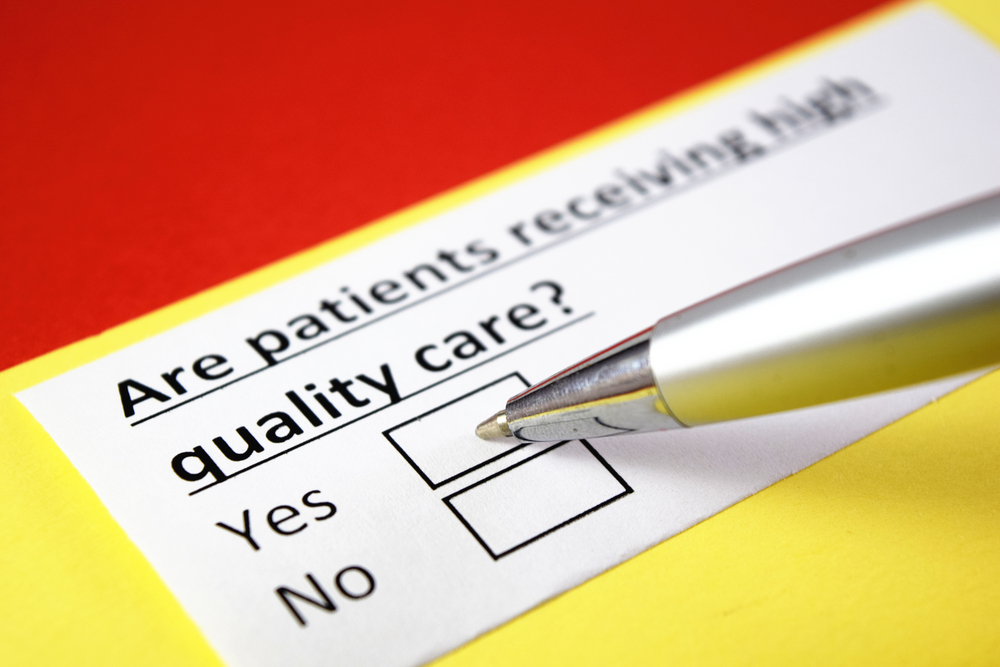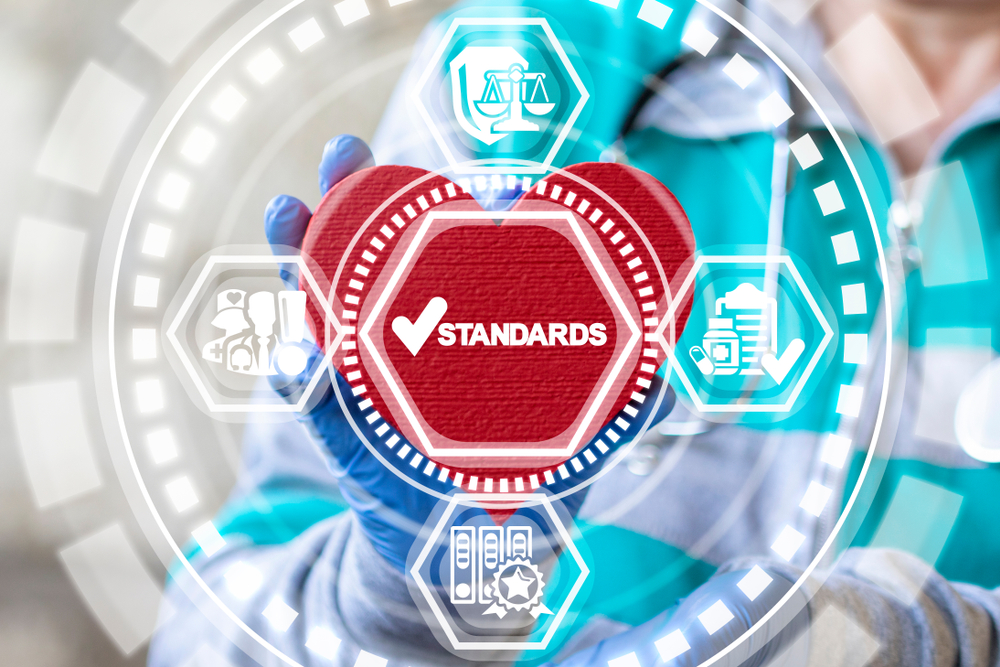A typical healthcare facility in 2021 is buzzing with health systems. They’re here to make care more patient-centric and less paper-based.
But this concept has backfired.
EMRs, EHRs, patient portals, insurance forms, and other health systems are more like a maze of data, with a yawning gap between each player. Because they are not interconnected, they fail to ensure the level of care and cost efficiency they can potentially provide.
This is why health data interoperability is now in the spotlight. Interoperability isn’t a big deal if you’re a practitioner working in your own corner. But it is if you’re trying to run a busy clinic efficiently, and your systems aren’t working together.
Read also: Will AI Replace Doctors?
This article outlines the concept of interoperability in healthcare industry and why it matters for all stakeholders. In it, we’ll cover:
-
What healthcare interoperability means
-
The current state of the interoperability landscape
-
The obstacles that can get in your way when building interconnected health systems
-
The future of interoperability for healthcare
Let’s start with the basics.
What is interoperability in healthcare?

To grasp what interoperability actually means, just think about your workflow. On one side, you have an HMS that your staff uses to collect, structure, and process cross-departmental data. On the other side, you have EHRs that are not accessible to your patients. And somewhere in between, you have a standalone billing and claims management system.
When all these systems are interoperable, they become a single integrated unit in which health data flows back and forth. They communicate seamlessly to share and interpret information between each other and with similar systems outside your facility.
In short, interoperability in healthcare information systems creates a unified environment for health data. It can be used at a local or even national level to step up the quality of care you provide, and it can yield millions in savings for your clinic.
Types of interoperability in healthcare
Interoperability is a complex concept that’s built upon four levels. HIMSS, one of the biggest names dedicated to revolutionizing the global healthcare industry, labels these levels as foundational, structural, semantic, and organizational.
-
Foundational interoperability is the most basic level. It opens up a direct data exchange channel between two health systems. Interoperability begins with this foundation, although systems at this level can’t process the data being exchanged yet. Think of sending an OTC medication list in PDF that a receiving system can store but not read.
-
Structural interoperability covers data formats. With this level, systems can now dig deeper into what exactly they send each other. Think of a pharmacy system that uses the same information exchange format as a provider so that it can process medication lists.
-
Semantic interoperability covers data handling and usage. Semantic interoperability healthcare systems leverage data in a standardized way as they break down and share information. For example, two systems can now recognize terminology, medication symbols, and other nuances while exchanging data automatically, without human intervention.
-
Organizational interoperability is about what it takes for semantic interoperability to become a feasible system in your clinic. This level encompasses the nitty-gritty of implementation, management, and even legal processes to turn the concept into a tangible solution.
Reaching semantic and organizational levels is a huge challenge. But when these are achieved, the benefits are considerable.
What can stakeholders expect from healthcare interoperable systems?

Healthcare interoperability has a lot to offer for all stakeholders. Most importantly, it’s a game-changer for the care you deliver and your overall efficiency. But first things first. Here’s what it holds for everyone, from patients to insurers.
Patients
Healthcare interoperable systems refine a patient’s journey by integrating health information and treatment plans. They save people from having to repeat the details of their conditions and previous therapies to different doctors.
Physicians
Interoperability of health information systems ensures your doctors have access to everything they need to know about their patients. This expedites the diagnostic process, minimizes unnecessary medical procedures, and relieves practitioner pressure and stress.
Administrative staff
Medical errors are too costly to turn a blind eye to, and data automation is your way to fend them off. With interoperable systems, your staff can avoid having to manually coordinate information exchange. Exchanges happen automatically, which eliminates human error in processes, such as appointment scheduling and medical billing.
Pharmacies
Rx transfer is part of interoperability, too. Pharmacies can streamline their workflow by receiving e-prescriptions from providers and overseeing which medications they give to patients.
Insurers
As interoperable systems contribute to early diagnosis, they help insurance companies reduce adverse event costs. What’s more, insurers save money on paying for repeat tests and other procedures that could be avoided.
The bottom line is that everyone in the healthcare industry can benefit from healthcare interoperability. Now let’s take a closer look at the system in action.
Examples of interoperability in healthcare

The concept of interoperability is easier to understand when looking at real-life cases. So put yourself in a patient’s or a doctor’s shoes.
Imagine that a patient who has their health records at a local hospital walks into your clinic. If you’ve mastered interoperability, you can retrieve this patient’s EHR at the click of a button. This saves both of you plenty of time discussing previous treatments and medications the patient is currently taking. Once the appointment is over, you send the records to other departments in your clinic to start tests or treatment.
Let’s say your patient needs infusion therapy. A nurse will then receive their EHR and make sure the required dosage of medications is programmed in an infusion pump. It then takes just seconds to set up the equipment and start the therapy. Interoperable systems eliminate manual entry and calibration.
After your patient has received treatment, the billing stage begins. This is when your staff usually enters medical codes for every service you’ve provided and prepares claims. In a clinical setting with interoperable systems, however, all the data is shared automatically and transmitted to the patient’s insurance carrier for payments.
All these steps in a patient’s treatment journey involve some type of data exchange in the healthcare. Interoperability makes it as smooth as it can be, whether it’s passing between your clinic’s departments or to different healthcare institutions.
This is a bare-bones example of interoperability in healthcare. In fact, its uses can be way more diverse and cross-organizational. This is why standards and data formats play such a big part in interoperable systems.
What is FHIR and why is it important?

Health systems can’t share data unless it’s structured. That’s why many organizations double down on developing a “lingua franca” for these systems, known as healthcare interoperability standards.
FHIR is one such standard. It stands for Fast Healthcare Interoperability Resources and is the brainchild of HL7, a non-profit that focuses on interoperability standards. As one of the most popular and widely implemented standards in the field, FHIR has revolutionized the communication of health systems across medical facilities.
FHIR brings complex data exchanges into an already familiar online environment. It uses standardized resources for all data elements, making them identifiable and shareable across different information systems. These can include everything from physical therapy software to EHR systems and legacy platforms.
What this means for healthcare providers is that they can now offer better value-based care through more accessible data. FHIR can even be coupled with APIs to streamline processes, such as:
-
A patient’s journey from the moment they choose your facility
-
Document flow through EHRs and apps
-
Care coordination and how patients interact with their doctors
-
The diagnostic process
-
Data analysis with your patient’s wellness in mind
These are just a few examples of FHIR opportunities. With its resources, web formats, and RESTful architectures, FHIR is like the Internet of Things making its way into medical settings. This is why it’s so popular. Other interoperability standards in healthcare lag behind it because they can’t provide the same IoT benefits as FHIR.
However, there’s always a fly in the ointment. Achieving interoperability with resource-based standards is a tricky process that comes with its fair share of FHIR challenges. By way of explanation:
-
If you’ve already invested in adopting other interoperability standards, you may have trouble aligning them with FHIR. Very few standards can co-exist well from the outset.
-
Even though various FHIR interoperability standards come with implementation guides, it’s hard to get them all working together. There are simply too many versions to choose from.
-
To go far with FHIR, you can’t go alone. FHIR loses its impact if other healthcare settings fail to keep up with your pace of implementation, which means deployment probably won’t go as fast as you’d like it to.
-
FHIR makes you dependent on regulations. Before it can benefit data exchanges across organizations nationwide, this standard needs to be regulated at the government level. But governments are reluctant to do this until FHIR comes with the only clear-cut version to adopt.
The way FHIR connects disparate health systems through APIs accelerates interoperability. Despite all its shortcomings, the standard makes implementation easier and takes high costs out of it. The bottom line is that FHIR is here to stay, and all decision-makers need to have it in mind when considering health systems development.
Key problems with interoperability in healthcare

Most healthcare providers agree that they need to adopt interoperability to improve data quality, which is an auspicious start. Still, in a survey from the Center for Connected Medicine, fewer than 40% of providers in the US reported that they’ve managed to do it well enough to be able to share health data with other organizations.
A huge gap exists between what providers need to do and how successful they are at doing it. That’s because they have to overcome a plethora of healthcare interoperability challenges along the way. The first of these is tied to standards.
Challenge #1 — An avalanche of standards
Interoperability is a team effort, and standards should help achieve it in a well-coordinated manner. But seriously, how can you ensure that your clinic follows the same practices as other healthcare facilities when every standard is so different? The unfortunate truth is that what is supposed to be streamlining processes is actually thwarting them.
As we’ve already seen, message formats, FHIR, and EHR interoperability standards are hard to adopt because they establish different information exchange rules. This results in a disjointed implementation process for clinics.
Challenge #2 — Too much data to handle
When health data flows from one system to another, it’s important to prevent it from overflowing. This is not an easy thing to do.
Interoperability in healthcare is about finding a way to deal with EHR/EMR information, data from IoT sources, internal hospital systems, and so much more. If you fail to handle them at the same time, they can disrupt your processes. To avoid this, you need to invest in data integration tools and healthcare analytics solutions.
Challenge #3 — Murky data exchange practices
Some providers use the interoperability trend to line their pockets. They impose fees that you have to cover to access health data, such as patients’ EHR. This practice is called information blocking, and it’s certainly a formidable obstacle to interoperability in healthcare.
Insurance companies that refuse to share health data with providers present another hurdle. In a perfect world, you would be able to learn everything you want to know about your patients’ previous treatments by looking into their claims. But this is not always possible because insurers are reluctant to grant access to them.
Challenge #4 — Lack of skills and resources
Once again, interoperability only works if all clinicians, insurers, and government agencies join forces. But the thing is that many medical settings lack the financial resources to make the necessary changes. Interoperability requires initial investments that are beyond the budgets of many clinics, even though it allows for huge savings down the line.
Lack of training also hinders smooth interoperability. Stakeholders need to invest in upskilling their staff at all levels to streamline workflows and ensure that everyone knows how to use interoperable systems, and this takes time.
The future of interoperability in healthcare

Automated data sharing is well underway in the healthcare industry. Thanks to FHIR and new HIMSS interoperability initiatives, providers are keen to leverage the power of shared data for better patient experiences.
That said, key obstacles to implementation remain. For example, while some providers are in the dark about how to standardize interoperability, others struggle with safe data transfer.
In the short term, stakeholders are looking to embrace new interoperable healthcare solutions to overcome these obstacles. All eyes are on:
-
APIs in healthcare. APIs make it easier for healthcare providers to achieve software interoperability at internal and cross-organizational levels. They boast a reduced deployment time and provide patients with obstacle-free access to treatment records, lab results, and so on. This is why FHIR APIs will soon be finding their way into every healthcare platform. As a bonus, they establish a consistent standard for all systems, which facilitates third-party integrations.
-
AI. With machine learning at the core, AI systems can process the ever-increasing flow of health records, clinical notes, and patient forms. In this way, they can help address most of the healthcare interoperability challenges in healthcare that are related to data handling. What’s more, AI systems arm you with real-time insights, regardless of the source the data is coming from.
-
Blockchain. Security is vital, especially when you’re exchanging large amounts of sensitive data. Blockchain is one way to tighten it up. This technology shows untapped potential for keeping EHR information safe from unauthorized parties while it moves from one system to another. What’s more, blockchain can be used to minimize the risk of data fraud, whether you’re exchanging EHRs within your clinic or with other stakeholders.
There’s no one pre-set path to interoperability, but the underlying challenge that all organizations face is to comply with all the regulations and standards and align them with their technical capacity. This is why collaboration with a reliable industry service provider can be a lifesaver.
Demigos CEO: expert opinion
“Recent research shows that the average frontline healthcare worker spends 56% of their time in front of computers. This takes away the time they could devote to treating patients instead of reconciling data across health systems. To cap it off, think of all those hours your accountants and other employees spend manually entering data.
But even with that, the problem is still bigger. Imagine a cancer patient who is switching to a new insurance plan. They would need to transfer all their old records, including diagnoses, radiology films, doctors’ notes, medication prescriptions, visit reports, and so on. And there’s always a chance the reconstructed EHR would still be incomplete.
These are just a few of the examples of how non-interoperable systems impede healthcare.
On the other hand, it’s hard for a healthcare facility to replace existing systems. The possible solution to this problem may be an integrational layer that connects disparate systems and sets up data exchange. Additionally, you can implement a solution to export and import patient information in common data formats, which is something Demigos can help you with.” — Ivan Dunskiy
The name you can trust for all things interoperability in healthcare
If interoperability is your Everest, Demigos can give you the gear to reach its summit. We know what it takes for small- and medium-sized clinics to be able to deliver value-based care, and we have the healthtech software services and experience to help them get there.
For us, nothing is more important than streamlining the way your doctors and staff work to improve patient experiences. That’s why we think of healthcare interoperability as a prerequisite for higher-quality care.
Whatever you want us to develop, be it a medication tracker, an HMS, or a telemedicine platform, we’ll put interoperability high on the agenda. You’ll get a software solution that can be integrated into your existing health systems for simplified data sharing. We’ll develop it so that it uses FHIR or any other standard you need to comply with.
Are you ready to harness the interoperability of health information systems in your clinic? Get in touch today to start the conversation.






